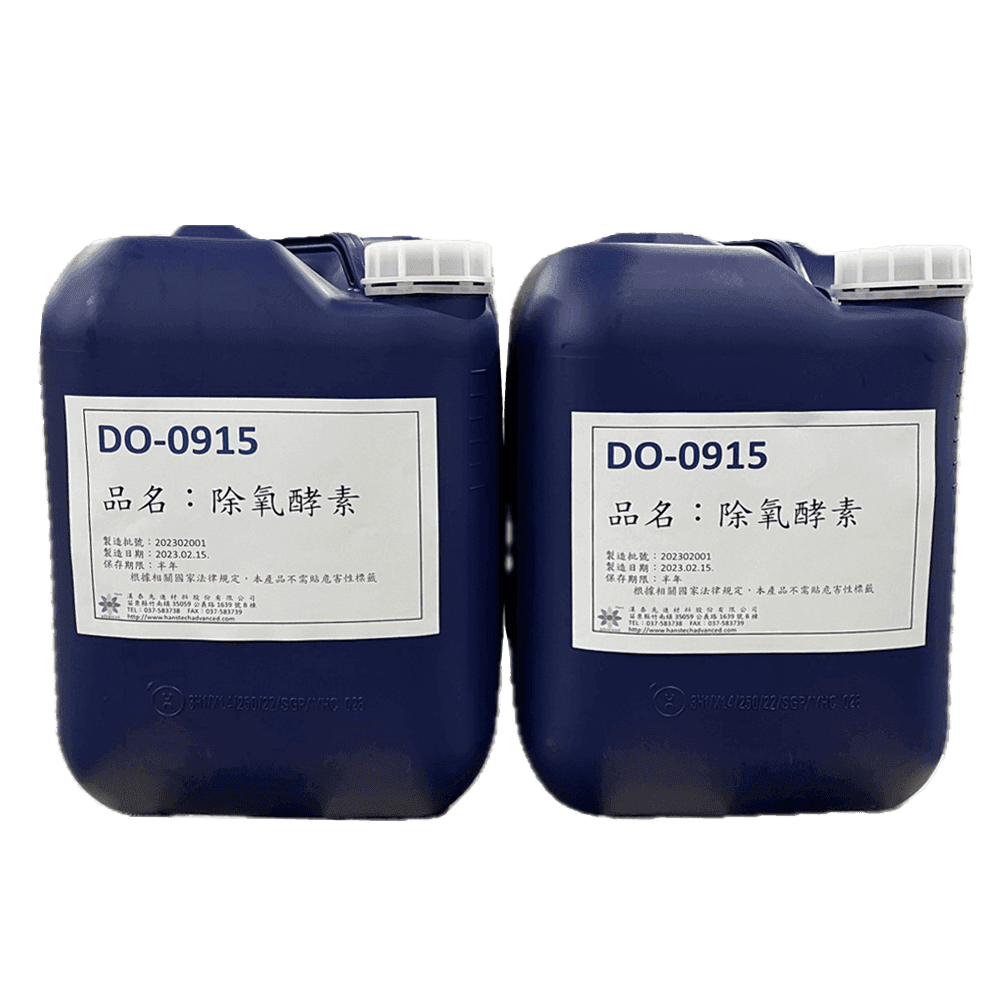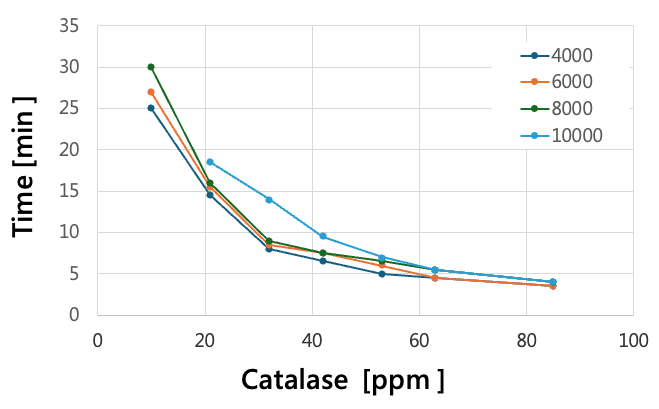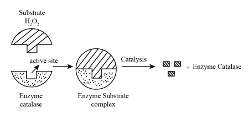
Index / Products

1059
De-Oxygenase Enzyme
Features and Benefits
- • Rapid removal of hydrogen peroxide
- • Significantly reduces treatment costs
- • A Wide range of applications:semiconductor, optoelectronics, pulp & paper, and textile dyeing industries.
- • Customizable formulations based on waste liquid characteristics.
- • No impact on discharge standards; no sludge generation.
- • No impact on the environment.
- • Resistant to interference from metal ions (e.g., Cu, Fe) which typically affect standard enzyme activity

Reaction mechanism


Comparison of Commonly Methods for Hydrogen Peroxide Removal
| ADVANTAGES | DISADVANTAGES | |
|---|---|---|
| Activated Carbon | ㆍ Strong hydrogen peroxide removal capability ㆍ Capable of adsorbing organic compounds | ㆍ Fragile and prone to breakage, resulting in high consumption. ㆍ Treatment systems are prone to clogging |
| Ferrous Ion (Fenton Process) | Simultaneously removes COD | ㆍ Sludge disposal is required ㆍ pH adjustment ㆍ The concentration of hydrogen peroxide should not be too high before treatment. |
| Sodium Thiosulfate | No sludge generation | ㆍ High chemical dosing cost and large dosing volume ㆍ Prone to residual hydrogen peroxide. ㆍ Significant increase in conductivity |
| De-Oxygenase Enzyme | ㆍ Low investment cost. ㆍ No need to change existing equipment. ㆍ Removes 90% of hydrogen peroxide in 10 minutes ㆍ No sludge generation ㆍ No impact on COD, ammonia nitrogen, or other parameter levels. ㆍ Capable of treating high-concentration hydrogen peroxide | ㆍ Dosing cost comparable to the Fenton Process ㆍPoor thermal stability; higher dosage required at temperatures above 45°C. |
